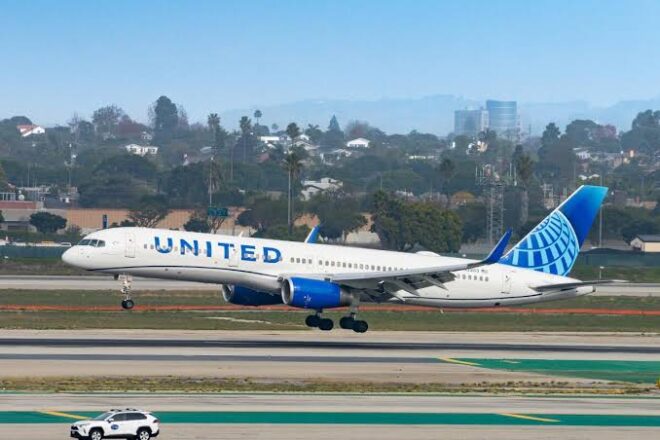
On a routine Tuesday morning, a United Airlines flight en route from Charleston, South Carolina, to Houston, Texas, faced an unexpected mechanical issue that prompted an emergency landing at the Baton Rouge Metropolitan Airport. The flight, carrying 123 passengers, was forced to change course due to safety concerns, marking a tense situation for all those on board.
The mechanical problem arose mid-flight, with initial reports indicating that the issue potentially compromised the plane’s operational safety. As a result, the pilots followed established safety protocols and contacted air traffic control to arrange an emergency landing. Due to deteriorating visibility conditions in the region, the plane was directed to land at Baton Rouge Metropolitan Airport rather than the originally considered Louis Armstrong New Orleans International Airport.
Emergency responders at Baton Rouge Metropolitan Airport were promptly notified and prepared to assist the incoming aircraft. The emergency landing, which took place in the morning hours, was executed successfully without any reported injuries among the passengers or crew members. Baton Rouge officials confirmed that all 123 passengers were safely evacuated from the aircraft after it touched down.
Following the landing, passengers recounted the unnerving experience. Several described feeling a sense of anxiety and uncertainty as the plane descended toward Baton Rouge instead of Houston, their intended destination. “We were told there was a mechanical issue, but there was no real way to know how serious it was until we actually landed,” said one passenger. “The crew remained calm, which was reassuring, but you could feel the tension in the air.”
Some passengers reported hearing unusual noises from the plane before the decision to make an emergency landing was announced. While the specifics of the mechanical issue have not been disclosed by the airline, it was clear that the decision to divert the flight was a necessary precaution.
In addition to the mechanical problem, visibility issues in the area added another layer of complexity to the situation. Originally, the flight was intended to land at Louis Armstrong New Orleans International Airport, which is located roughly 70 miles southeast of Baton Rouge. However, thick cloud cover and other visibility-related concerns made Baton Rouge the more viable option for a safe landing.
The decision to reroute the flight to Baton Rouge reflects the collaborative efforts between United Airlines, air traffic control, and emergency services to prioritize passenger safety under challenging conditions.
Following the emergency landing, United Airlines quickly coordinated a recovery plan to ensure passengers could continue their journey to Houston. The airline dispatched a recovery flight to Baton Rouge Metropolitan Airport, arriving on Tuesday afternoon to pick up the affected passengers. Efforts were made to accommodate travelers whose schedules were disrupted by the unexpected delay, with the airline offering alternative travel arrangements for those needing to adjust connecting flights.
United Airlines issued a statement later in the day, expressing gratitude for the quick and professional response of the crew, emergency responders, and Baton Rouge airport staff. “The safety of our passengers and crew is always our top priority,” the statement read. “We are thankful for the safe outcome and appreciate the patience of our customers while we arranged alternate travel plans.”
For Baton Rouge Metropolitan Airport, the emergency landing provided an opportunity to showcase its readiness to handle unscheduled landings and unexpected aviation incidents. The airport’s emergency services were prepared and coordinated, with ground crews ensuring the runway was cleared for the incoming aircraft. Airport officials worked closely with United Airlines and local emergency services to manage the situation smoothly, keeping passengers informed and facilitating a swift resolution.
Baton Rouge Metropolitan Airport, which primarily handles regional flights, is well-equipped to manage various aviation scenarios, including emergency landings. The airport staff regularly conducts drills to prepare for such incidents, ensuring they are capable of providing prompt assistance to aircraft in distress.
Aviation safety experts have noted that emergency landings, while rare, are a vital component of airline safety protocols. When a mechanical issue arises, the crew’s ability to make quick decisions and adjust flight plans can make all the difference in ensuring passenger safety. The fact that the flight was able to divert to Baton Rouge without further complications speaks to the effectiveness of the training and coordination among the airline, pilots, and air traffic controllers.
Experts have also pointed out that mechanical issues can vary in severity, from minor malfunctions to potentially serious problems. While specific details about the United Airlines flight’s mechanical issue have not been made public, the precautionary landing was undoubtedly the safest course of action.
As the passengers resumed their travels on the recovery flight to Houston, questions remain about the nature of the mechanical problem that prompted the emergency landing. The Federal Aviation Administration (FAA) is likely to investigate the incident as part of standard procedure following an unscheduled landing. United Airlines will also conduct its internal review to determine the cause of the mechanical issue and assess whether additional inspections or maintenance actions are needed for its fleet.
For those on board, the experience serves as a reminder of the importance of safety protocols and the resilience of airline crews in navigating unexpected challenges. Although the situation may have caused some anxiety and disruption, the successful emergency landing ensured that all passengers and crew members were able to continue their journeys safely.